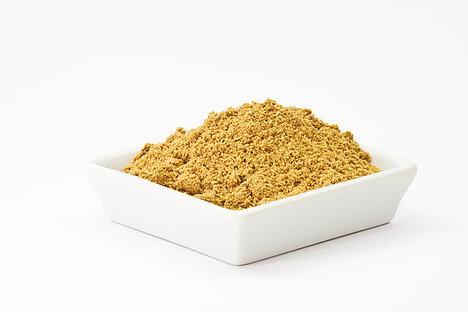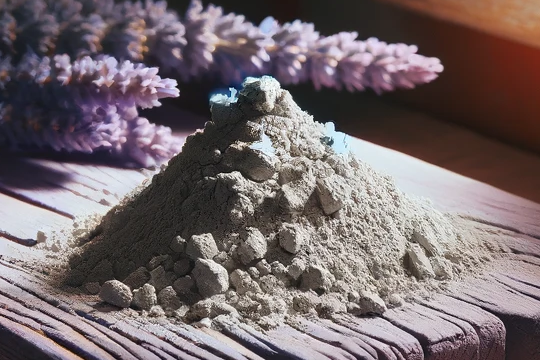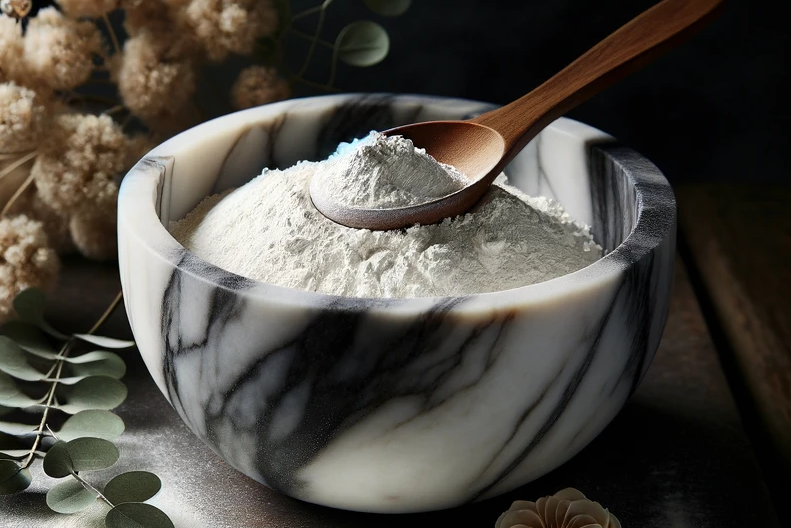Healing clay

Healing clay is a natural product consisting of various minerals and trace elements. It has been used in naturopathy for centuries to alleviate or heal various ailments. But can healing clay also help dogs? In this article, you will find out what healing clay is, how it works and what advantages and disadvantages it has.
What is healing clay?
Healing earth is a fine powder that is extracted from various rocks. Depending on its origin and composition, healing earth can have different colors, from white to grey to brown. Healing earth contains many minerals such as calcium, magnesium, iron or silicon as well as trace elements such as zinc, copper or selenium. These substances can have a positive effect on health.
How does healing clay work?
Healing clay has various effects on the body. On the one hand, it can bind and eliminate toxins, for example in the case of poisoning or a detoxification cure. On the other hand, it can inhibit inflammation and promote wound healing, for example in the case of skin problems or gastrointestinal complaints. It can also regulate the acid-base balance and support digestion.
How can healing clay be used?
Healing clay can be used both internally and externally. Internally, healing clay can be administered as a powder or in capsules. You should always make sure that the dog drinks enough water to avoid constipation. The dosage depends on the size and weight of the dog. As a guideline: 1 teaspoon per 10 kg body weight per day.
Healing clay can be applied externally as a paste or as a poultice to the affected areas. The healing clay should not be left on for too long, as it can otherwise dry out and irritate the skin. The duration of application depends on the severity and course of the symptoms. As a guideline: 1 to 2 times a day for 10 to 20 minutes.
What are the benefits of healing clay?
Healing clay has several advantages for the health of dogs. It is a natural and inexpensive remedy that can alleviate or cure many ailments. It has hardly any side effects and is well tolerated. It can also be used preventively to strengthen the immune system and improve well-being.
What are the disadvantages of healing clay?
Healing clay also has some disadvantages that you should be aware of. It is not a miracle cure and cannot cure all diseases. It should always be used in consultation with a vet to rule out possible interactions with other medications or illnesses. It can also lead to overdoses or deficiency symptoms if used for too long or too much. It can also trigger allergic reactions or dry out the skin.
Healing clay is a versatile natural product that can help dogs with various ailments. It has many positive effects on the body, but also carries risks that should not be underestimated. For this reason, healing clay should always be used with caution and a sense of proportion and, if in doubt, a vet should be consulted.
If you notice any signs of hypersensitivity or poisoning in your dog, you should see your vet immediately. We are not a substitute for a vet, but we try to be as accurate as possible. Every dog reacts differently and we recommend you get a second opinion or consult your vet if in doubt.
Stay healthy and take good care of your four-legged friend!😊
Similar to Healing clay
Bentonite is a fine powder consisting of various clay minerals. The most important are montmorillonite, kaolinite and illite. These minerals have a platelet-like structure that can swell in water...
Zeolite is a naturally occurring, microporous mineral with a unique crystalline structure consisting of aluminum, silicon and oxygen. Its special ability to exchange ions and adsorb molecules makes...
Kaolin, also known as china clay or white clay, is a naturally occurring white mineral consisting mainly of the mineral kaolinite. It is used in various industries, from ceramic production to...
Activated charcoal is made from wood, coconut shells, bones or other organic materials. These are heated and treated with oxygen or water vapor to create small pores. This creates a very large...



